United States stamp Scott #119 belongs to the 1869 Pictorial Issue, a series notable for introducing engraved scenes of historical and allegorical importance into U.S. postage for the first time. This issue was produced to modernize the nation’s stamp designs and provide denominations that matched both domestic and international postal rates.
Scott #119 is the 15-cent denomination, portraying the landing of Columbus, and it exists as Type II, a classification based on engraving differences from the earlier Type I (Scott #118). While Type I showed complete background lines in the sky behind the vignette, Type II is distinguished by slight incompleteness in those same lines. This change in plate work created two recognized types within the 15-cent issue.
The stamp’s production was tied directly to the growing demands of international mail routes in the late 1860s and early 1870s, ensuring higher-value denominations could accommodate treaty obligations and expanding mail traffic.
Design & Print
Scott #119 was printed by the National Bank Note Company, which held the U.S. government contract at the time under Postmaster General Alexander Randall. Issued in 1869, approximately 2,045,000 stamps of this type were produced.
Like its Type I counterpart, the design was based on John Vanderlyn’s 1847 painting “The Landing of Columbus,” a work that had also been adapted for the Rotunda of the U.S. Capitol. The vignette is printed in blue while the frame is brown, marking it as one of the early bicolor stamps in U.S. postal history.
Scott #119 (Type II) can easily be confused with Scott #118 (Type I). They are nearly the same exact identical designs. The Scott Catalogue mentions horizontal vs diagonal shading lines on the sign of the vignette. However these can often be difficult to see as the vignette is often shifted during the printing process, covering up the shading lines.
Luckily there is a much easier way to tell them apart. Continue reading to learn how.
Postal Usage
The 15-cent denomination was primarily intended for international mail. At the time, the standard half-ounce rate for letters sent to the United Kingdom was 12 cents, though other European destinations had varying rates depending on treaty agreements.
The 15-cent stamp provided an efficient way to cover these charges, especially for countries where the base foreign letter rate exceeded the common 12-cent level. Additionally, it was used in combination with other values to satisfy complex rates on heavier correspondence or parcels. While it was available for domestic use, it was not commonly applied to single-rate letters within the United States because of its relatively high denomination.
Instead, it functioned mainly as a tool for ensuring compliance with international agreements that required precise postage values for transatlantic and foreign-bound mail.
Identification
Scott #119 can be identified by its bicolor composition, with a blue vignette of Columbus’s landing surrounded by a brown frame. It is perforated 12, printed on hard wove paper, and bears the G grill, generally measuring about 9–13 points by 11–13 points.
The easiest way to tell the difference between #118 and #119 is to look just under the word “POSTAGE”. On Scott #118 this area is empty, somewhat in the shape of teepee. On Scott #119 there is a diamond shape in the same place.

A. Scott #118 has an empty space under “POSTAGE”, whereas on Scott #119 there is a diamond shape in the same place.
Careful examination of the frame above the vignette is necessary to confirm the stamp’s classification as Scott #119. Its technical characteristics make it one of the more complex stamps to identify within the 1869 series, requiring detailed study of both grill presence and engraving subtleties.

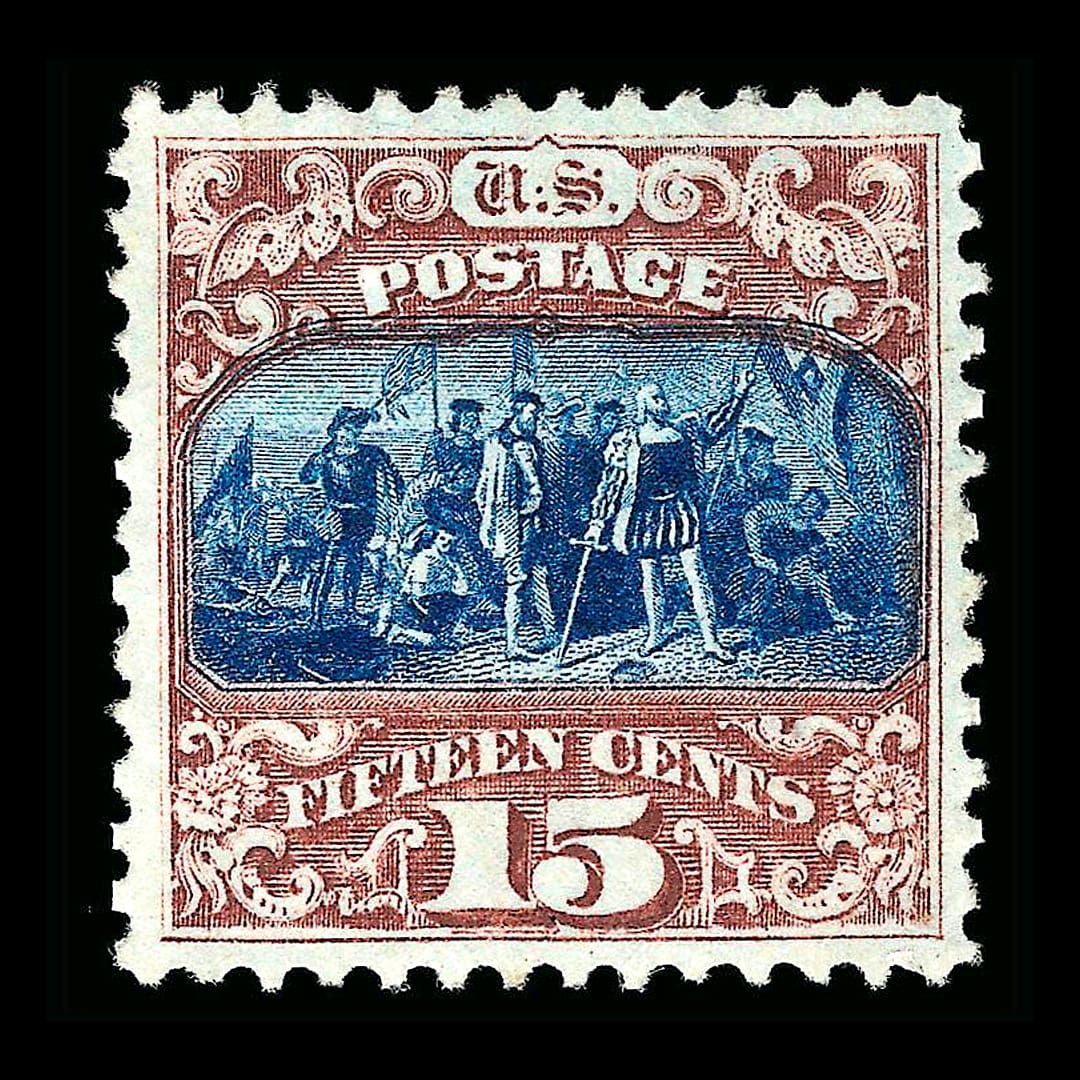

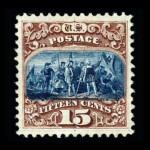
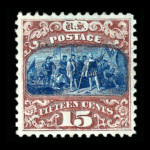

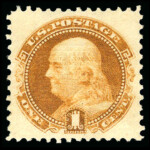
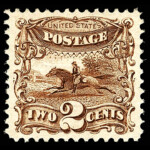
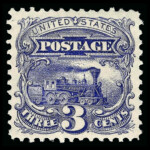
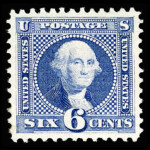
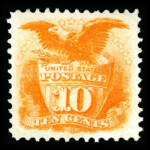

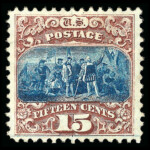
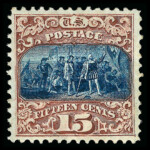

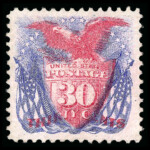













Ask A Question Or Leave A Comment